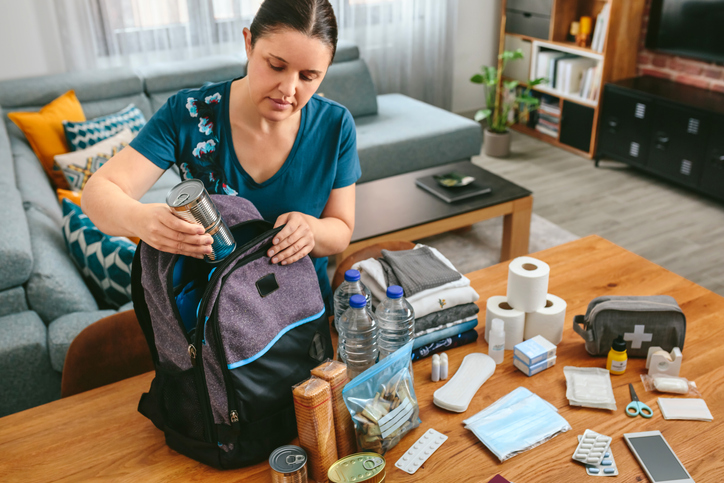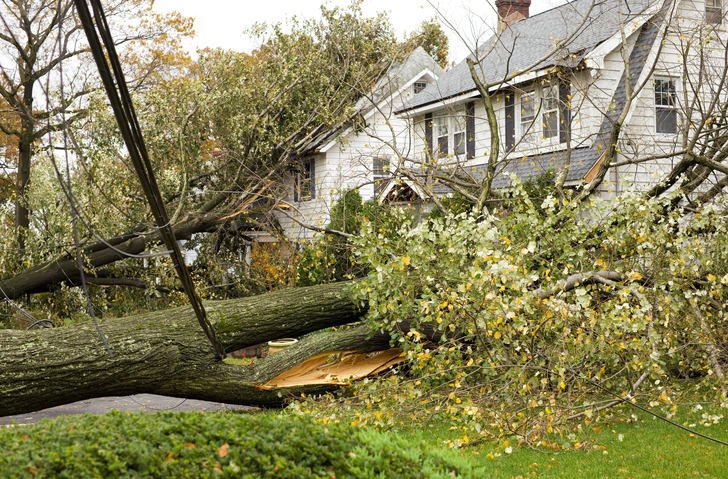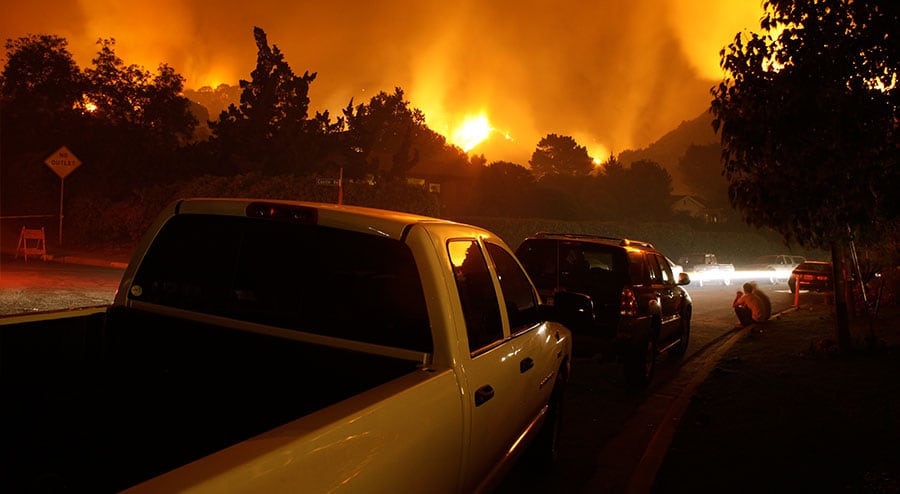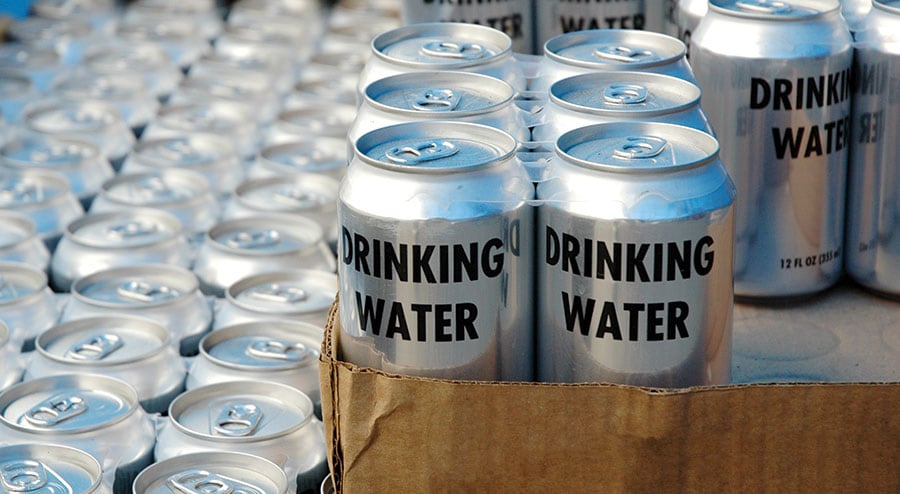Natural disasters can strike unexpectedly and having a well-prepared emergency plan is essential to safeguarding against the devastating impact of such events on our homes and families. From earthquakes and hurricanes to floods and wildfires, understanding the potential risks and hazards specific to your region is the first step in crafting an effective home emergency preparedness strategy.

Homeowners must identify safe areas within their homes to seek shelter during various disasters and secure heavy furniture and appliances to prevent injuries during seismic events or high winds. Creating a communication network with neighbors and identifying evacuation routes are necessary for a swift and coordinated response in case of evacuation. Moreover, having adequate emergency supplies, medical provisions, and a reliable list of emergency contacts can prove to be lifesaving during critical times.
Table of Contents
- Understanding the Natural Disasters in Your Region
- Assessing Risks and Hazards in Your Home
- Identifying Safe Areas and Evacuation Routes
- Emergency Supplies and Resources
- Protecting Valuables and Documents
- Special Considerations for Vulnerable Family Members
- Communication Plan and Emergency Contacts
- Medical Preparedness and First Aid
- Insurance and Financial Preparedness
- Take Away
Also considering the needs of vulnerable family members, such as children, the elderly, and pets, ensures that everyone is accounted for and well-cared for during emergencies. Protecting valuable possessions and important documents from potential damage is equally vital. By addressing insurance considerations and adopting sustainable practices, homeowners can strengthen their resilience and enhance their ability to withstand natural disasters. Regularly reviewing and updating the emergency plan will help homeowners stay prepared and minimize the impact of such events on their homes and communities.
Understanding the Natural Disasters in Your Region
You must identify the common natural disasters that pose a threat to your geographical region in order to create a comprehensive emergency preparedness plan. Different areas are susceptible to specific types of disasters, such as hurricanes in coastal regions, earthquakes along fault lines, tornadoes in tornado alleys, and wildfires in dry, forested areas. By understanding the potential risks in your location, you can tailor your preparedness efforts to focus on the most relevant and likely scenarios.
Climate change has influenced the frequency and intensity of these disasters. As global temperatures rise, we have witnessed an increase in extreme weather events, like severe storms, hurricanes, and wildfires. Warmer sea surface temperatures have contributed to more intense hurricanes, while prolonged droughts have fueled more frequent and intense wildfires. Being aware of these changes underscores the urgency of preparedness and adaptation measures to protect your home and loved ones.
Knowing the disasters most likely to impact your region allows you to allocate resources effectively, prioritize specific safety measures, and develop an informed response plan. By staying informed and proactive in understanding the natural hazards around you, you can better protect your family and enhance overall community resilience in the face of natural disasters.
Assessing Risks and Hazards in Your Home
Conduct a thorough risk assessment in and around your home when creating your comprehensive emergency preparedness plan. By inspecting each room and outdoor space, you can identify potential hazards and vulnerabilities that may pose risks to your family’s safety during natural disasters. Look for sharp edges, unsecured heavy furniture, and items that could become projectiles during storms. Addressing these hazards proactively can prevent injuries and property damage.
Be sure to secure furniture, windows, doors, and outdoor items to withstand the impact of specific natural disasters. Utilize furniture straps, like those offered by Safety 1st or Skyla Homes, to anchor heavy furniture and prevent tipping over during earthquakes or high winds. Install impact-resistant windows and reinforced doors from reputable brands like Pella or Andersen to protect against severe storms and flying debris. Secure outdoor items such as playsets and patio furniture using ground anchors or heavy-duty straps to minimize the risk of these objects becoming hazards during storms or hurricanes.
It is also important to fortify your home’s structure against seismic events like earthquakes, especially if you live in an earthquake-prone area. Consult with a licensed contractor to evaluate your home’s seismic resilience and make necessary improvements. Techniques like installing steel plates or shear walls can significantly enhance your home’s ability to withstand ground shaking during earthquakes. Focusing on risk assessment and securing your home against potential hazards creates a safer environment for your family and increases your resilience to natural disasters.
Identifying Safe Areas and Evacuation Routes
Having designated safe areas within your home for different disasters and knowing established evacuation routes is a key aspect of home emergency preparedness. These two factors are very important in securing your family’s safety.
Safe Areas
Safe areas serve as vital shelters during hazardous events, providing protection from potential dangers. For instance, during tornadoes or severe storms, the safest spot is typically a basement or an interior room on the lowest level of the house, away from windows. Secure heavy furniture and consider using childproof locks on doors leading to hazardous areas, such as the garage or utility rooms, to prevent children from accessing danger zones. Investing in a reliable weather alert system, like the NOAA Weather Radio, is also critical to receiving timely notifications about severe weather events and taking necessary precautions.
Evacuation Routes
Having safe and planned evacuation routes should be done before the event of an emergency. Sit down with your family and draw a map that shows the best and quickest escape routes from each room in your home. Practice these routes regularly with your children to ensure they are familiar with the process and know where to go in case of an emergency. Additionally, if your area is prone to certain types of disasters, such as flooding, familiarize yourself with the community’s designated evacuation routes and emergency shelters.
Collaborating with neighbors is also invaluable during emergencies, as it creates a community-wide sense of preparedness and support. Organize neighborhood meetings to discuss disaster plans, share valuable resources, and coordinate efforts for mutual aid. Apps like Nextdoor provide a platform to connect with neighbors, exchange information, and offer assistance when needed. Being prepared and proactive in addressing safe areas, evacuation routes, and community networks, significantly enhances a family’s safety and resilience during natural disasters.
Emergency Supplies and Resources
Having essential emergency supplies on hand is crucial to ensure your family’s safety during natural disasters. For different disasters, prepare a well-stocked emergency kit that includes:
- First aid kit with bandages, antiseptic wipes, adhesive tape, pain relievers, and essential medications.
- Non-perishable food items such as canned goods, granola bars, and dried fruits, are enough to sustain your family for at least three days.
- Ample bottled water, with one gallon per person per day for a minimum of three days.
- Flashlights and extra batteries for each member of the household.
- Battery-operated or hand-cranked radio to stay updated on emergency alerts.
- Warm blankets and clothing to protect against cold weather.
- Personal hygiene items like hand sanitizers, wet wipes, and sanitary products.
Creating a sustainable and energy-efficient home is beneficial during emergencies when resources may be limited. To minimize resource dependence, consider investing in solar-powered devices such as solar panels to generate electricity and solar-powered chargers for essential devices. LED light bulbs are energy-efficient alternatives to traditional bulbs, providing brighter light and lasting longer. Smart home technology can also aid in managing energy consumption effectively. Products like the Nest Learning Thermostat automatically adjust temperature settings, optimizing energy use and saving costs in the long run.
You should also be aware of local emergency shelters designated by your local government and community resources such as relief organizations that you can quickly access during crises if needed. Additionally, community resources such as food banks, community centers, and emergency response teams can offer needed assistance during challenging times. Reach out to local authorities or community groups to gather information about available resources and how to access them during emergencies.
Being prepared with essential supplies, adopting sustainable practices, and being informed about local resources significantly enhance your family’s resilience and preparedness during natural disasters.
Protecting Valuables and Documents
Safeguarding your family’s assets during natural disasters by securing valuable possessions and important documents. Consider investing in a fireproof and waterproof safe to protect essential documents like birth certificates, passports, insurance policies, and legal papers. Brands like SentrySafe and Honeywell offer reliable safes designed to withstand various hazards.
For precious jewelry, family heirlooms, and valuable items, a secure home safe or a safe deposit box at a reputable bank can provide an added layer of protection. Keep an inventory of valuable possessions, including photographs and appraisals, and store this information in a digital format or cloud storage for easy access even if physical copies are lost or damaged.
Organize important documents and possessions in labeled, waterproof containers to keep them easily accessible and well-protected from potential disasters. Store these containers on higher floors or elevated surfaces to reduce the risk of water damage during floods. By taking these precautionary measures, you can ensure your valuables and documents remain safe and intact, providing peace of mind during unforeseen emergencies.
Special Considerations for Vulnerable Family Members
It is important to understand the specific needs of vulnerable family members to ensure their safety and well-being during emergencies. For children, creating age-appropriate emergency plans is essential. Involve them in emergency drills to familiarize them with the procedures, and designate a meeting point in case family members get separated. Comfort items like stuffed animals or blankets can provide a sense of security during stressful situations. Child locator devices, such as the My Buddy Tag or Jiobit, can help keep track of young children in crowded or unfamiliar areas.
Elderly family members may have specific medical needs or mobility challenges that require additional preparations. Keep an updated list of their medications, medical conditions, and doctors’ contact information, and make sure to have a supply of necessary medications readily available. In case of power outages, having a backup power source for medical devices, such as a portable generator, can be life-saving. Consider installing grab bars and non-slip mats in bathrooms to prevent falls, and provide easy access to emergency contact numbers for immediate assistance.
Pets are also vulnerable during disasters. Have an emergency kit for pets, including food, water, medications, and comfort items. Make sure they have proper identification with updated contact information, and consider microchipping for added security. Practice evacuating with pets, using carriers or leashes, to ensure a smooth and safe evacuation process. By addressing the specific needs of vulnerable family members during emergencies, parents can significantly enhance the overall preparedness and resilience of their household.
Communication Plan and Emergency Contacts
Traditional communication methods may be disrupted during disasters so be sure to have a reliable communication plan with family members. Start by designating an out-of-area emergency contact that all family members can call or message to check in and provide updates on their safety. This person should reside in a different region, as local communication lines may be affected by the disaster as well. Utilize multiple communication channels, such as text messaging, phone calls, social media, and email, to ensure you have various means of reaching your loved ones. Consider investing in battery-powered or hand-cranked radios to receive emergency alerts and updates from local authorities.
Create an emergency contact list, and include essential numbers such as local police, fire departments, and emergency medical services (EMS). Program these numbers into all family members’ phones and keep a printed list in your emergency kit for easy access. Additionally, store contact information for nearby hospitals, utility companies, and your insurance provider. Consider using smartphone apps like ICE (In Case of Emergency) that allow first responders to access vital medical information even if your phone is locked. By having a comprehensive communication plan and emergency contact list, you can ensure efficient communication and timely access to assistance during critical moments of disaster.
Medical Preparedness and First Aid
During emergencies and natural disasters, having essential first aid and medical supplies readily available can make a significant difference in providing immediate care to those in need. Your first aid kit should include basic items such as adhesive bandages, gauze pads, antiseptic wipes, adhesive tape, scissors, tweezers, and disposable gloves. Brands like Johnson & Johnson and First Aid Only offer comprehensive first aid kits with these essentials.
In addition to basic supplies, consider including medications like pain relievers, antihistamines for allergies, and antacids for digestive issues. Have a thermometer to monitor body temperature and a cold pack to reduce swelling and alleviate pain. If anyone in your family requires specific medications for chronic conditions, ensure you have an adequate supply of these medications in your emergency kit.
Be sure to familiarize yourself and family members with basic first aid procedures, such as treating cuts, burns, and sprains. Take a certified first aid course to learn these skills and build confidence in responding to medical emergencies. Remember to periodically check and restock your first aid kit, ensuring that all items are within their expiration dates. By being well-prepared with essential medical supplies and knowledge, you can provide effective first aid and immediate care during emergencies, potentially preventing further complications and ensuring the safety of your family.
Insurance and Financial Preparedness
Insurance considerations are important to ensure that homeowners have adequate coverage for potential disaster damages. Review your homeowners’ insurance policy to understand what types of natural disasters are covered and what the limits and deductibles are. Some standard homeowners’ insurance policies may not include coverage for certain disasters, such as floods or earthquakes, so consider purchasing additional coverage or separate policies for these specific events. Flood insurance is available through the National Flood Insurance Program (NFIP), while earthquake insurance can be obtained from private insurance companies like Allstate or State Farm.
You should be aware of how to manage food and water supplies in times of power outages or restricted access to stores during emergencies. Have a supply of non-perishable food items that require minimal preparation, such as canned goods, granola bars, and dried fruits. Store enough bottled water to last your family for at least three days, aiming for one gallon of water per person per day. To maintain food safety during power outages, avoid opening the refrigerator or freezer unnecessarily, as this will help preserve the cold temperature inside and keep perishable items fresh for longer. Investing in a portable generator or solar-powered charger can also be beneficial in powering essential devices and keeping communication lines open during emergencies.
Carefully reviewing insurance policies and taking proactive measures to manage food and water supplies strengthens homeowners’ financial preparedness and overall resilience in the face of natural disasters.
Take Away
Home emergency preparedness is crucial for safeguarding our homes and loved ones from natural disasters. This comprehensive guide covers understanding regional risks, securing safe areas, planning evacuation routes, addressing vulnerable family members’ needs, establishing communication plans, and having essential first aid and medical supplies. By taking proactive steps and regularly updating our emergency plans, we can enhance our resilience and be well-prepared for any potential disaster.




